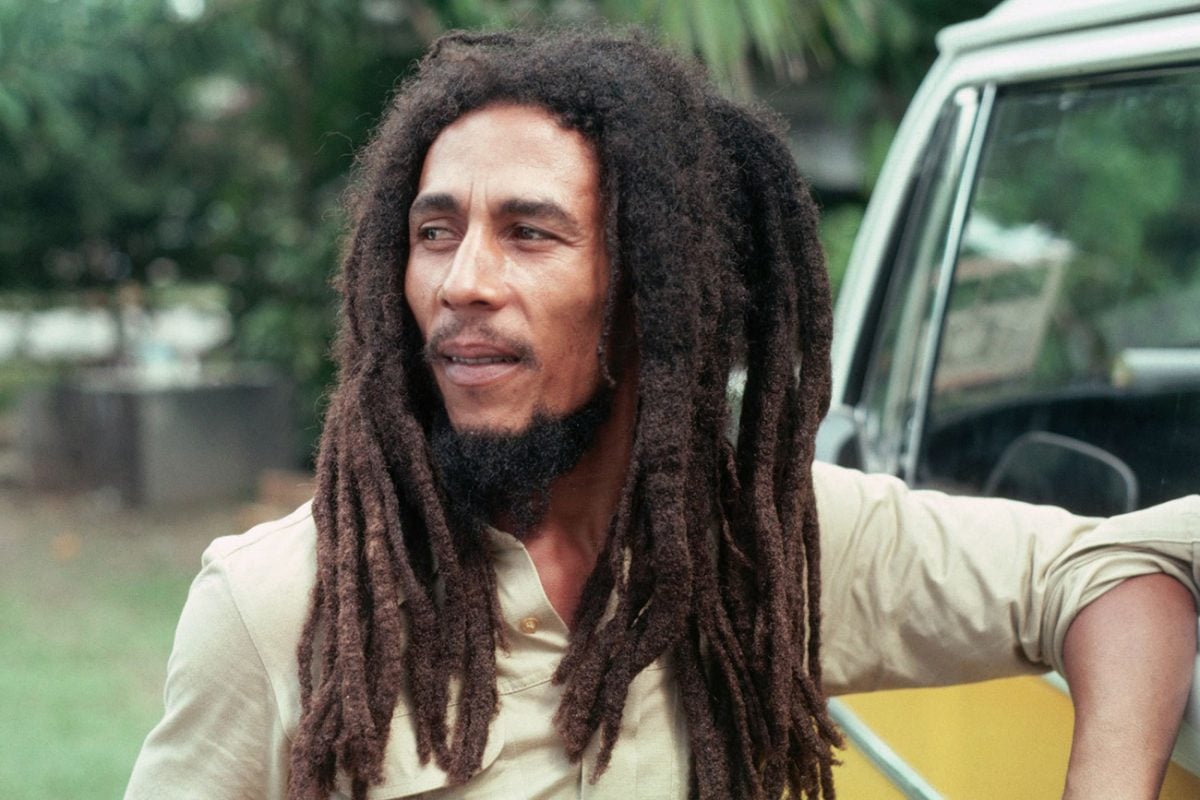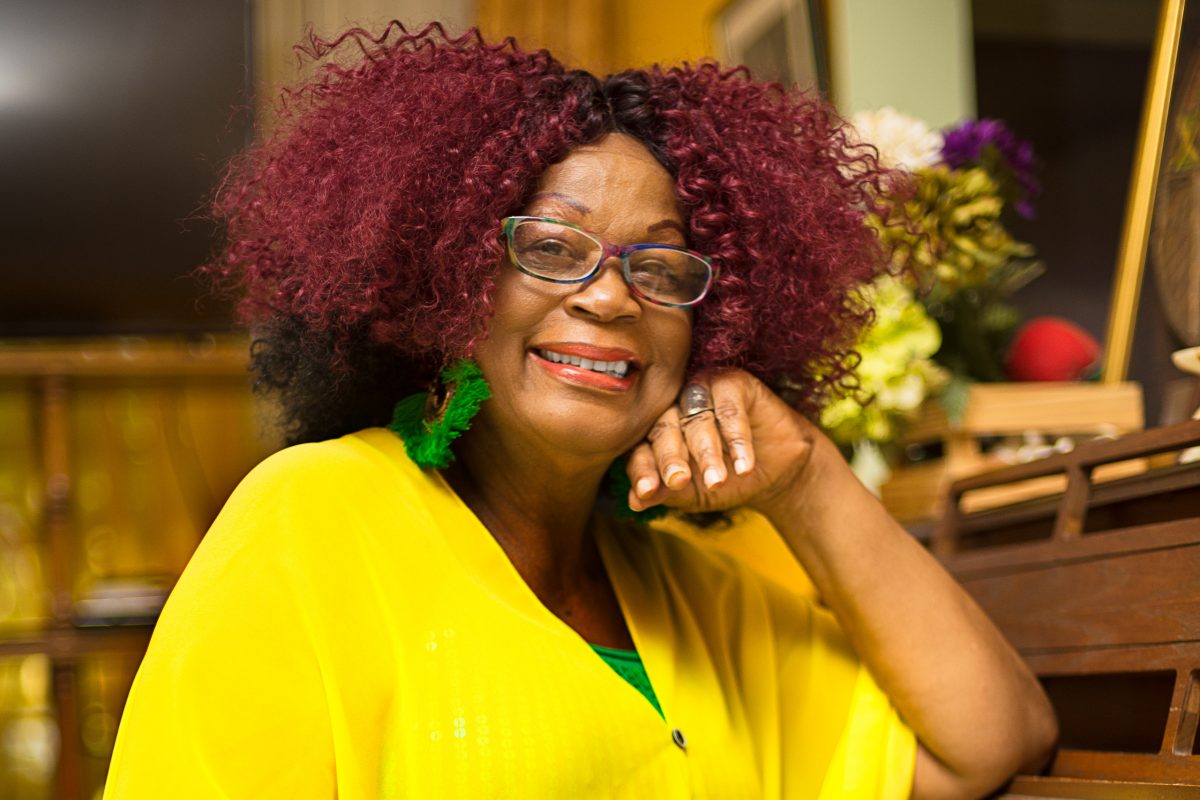Judy Mowatt Recalls Bob Marley’s Final Concert In Pittsburgh

Reggae singer Judy Mowatt, a member of the original I Threes alongside Marcia Griffiths and Rita Marley, still has vivid memories of the final concert she ever did alongside Bob Marley and the Wailers, over 41 years ago.
“On the last tour, in 1980, we were in the US, Danny Sims was the manager, and the first concert was supposed to be Pittsburgh. We spent the night in New York and the next morning, Bob Marley was walking – Bob was a fanatic when it comes to exercising, he knows that he has to keep his body in physically peak conditions, vitamins and eating right – he was heavy on that. He and Allan Cole went to walk in the morning because everyone would drive up from Pittsburgh for the concert, and he collapsed in Central Park,” Mowatt reminisced.
Mowatt remembers the days before Marley’s final concert in 1980.
Bob Marley and the Wailers had been touring to promote the album Uprising which had been released in May 1980. The band had already completed a major tour of Europe, where Marley played his biggest concert to 100,000 people in Milan, Italy. After the tour Marley went to the United States, where he performed two shows at Madison Square Garden in New York City as part of the Uprising Tour in the USA.
The musicians and the I Threes made the rendezvous in Pittsburgh but there was no Bob. That final concert took place at the Stanley Theater (now The Benedum Center For The Performing Arts) in Pittsburgh, Pennsylvania, on September 23, 1980, two days after the Central Park incident.
“When we got to Pittsburgh, we didn’t see anyone else, we heard the musicians arrived but nobody saw Bob, then Rita got the message that Bob had fainted in Central Park.”
Mowatt said she felt a pang of presque vu, a harbinger of impending doom, if you will.
“We weren’t sure Bob would come that evening but he did come and it was a very sad feeling that emanated in the atmosphere. I felt sad, it could be an illness he could have recovered from but I was sad. He came to the sound check and he sat at the drum riser for a long time, when the band played song for the sound check, he took a little while to go to the mike and sing the song and then he would go back to the drum riser to sit down,” she reminisced.
In July 1977, Marley had been diagnoses as having a type of malignant melanoma under the nail of a toe. It was a symptom of already-existing cancer, acral lentiginous melanoma. Unlike other melanomas, it affects people of colour and occurs in places that are easy to miss, such as the soles of the feet, or under toenails. Once the melanoma was discovered, Marley refused to have his toe amputated citing his religious beliefs, choosing to remove the nail and nail bed instead.
Despite the doom and gloom, Marley delivered a marquis performance, making a dramatic transformation that night from cancer-struck patient into the legendary irrepressible stage performer, the Tuff Gong.

“The night of the concert, the people wouldn’t know that something was wrong and if we didn’t know he had fainted, we too wouldn’t know something was wrong because Bob gave his best. When he performs, he gives his audience everything, his strength , you have to say his very life, he gives you . I didn’t know that was the last time I was going to see Bob, the last time I would be seeing him, and I think that is what overshadowed the sadness. Thats why the sadness came over me, I don’t know if anyone felt the same at the time,” she said.
Marley earned three encores that night.
“He had three encores, and on the third, I wondered if he would be able to do that last one, and he went out there and did it. Bob is not the kind of person who allows anyone to be sympathetic, he is a very strong one. He doesn’t project weakness, cause with what happened, hearing what he heard – I don’t know what he heard – but that could have been devastating, but you couldn’t see it,” Mowatt said.
At the time, oncologists had diagnosed that his cancer had metastasized and spread to his brain, lungs, and liver.
“I don’t know if the doctor had told him it was cancer at that time. He would have had to have done a lot of tests to know it was cancer. I don’t think he knew fully what was wrong. But I was looking forward to the next tour, we had a long itinerary, I thought since he had done the concert that night, maybe he would do another, but the tour manager said the tour was being cancelled,” Mowatt said.
Then the dreaded news came.
“Everybody had to go home, everybody came out to work, enthusiastic about working and that was it. We heard it was cancer, then melanoma and then we understood he went to Germany, to see Josef Issels, who specialized in melanoma. He was there for eight months, then he was heading to Jamaica, and he wasn’t able to make it to Jamaica and they stopped in Miami and he was in the hospital. Marcia and I would follow up, I would call her and ask if she heard anything,” she said.
The prognosis was dire when he was admitted to the Cedars of Lebanon Hospital (later University of Miami Hospital) and died a few days later on May 11, 1981. Mowatt will always remember that fateful day.

“He had spent a few days in the hospital in Miami and then it was a Monday morning, sitting on the verandah like I am now and I got the phone call that Bob passed. I was not floored because of his illness which had gone on for so long…when I heard the news, it was very painful. I was looking forward to seeing him again, even if not working with him, I was looking forward to seeing him again, then I realized that death is final. all the years we have worked together has come to a closure and it just hit me, Bob was gone forever,” she said.
Marley was given a state funeral in Jamaica on May 21, 1981, which combined elements of Ethiopian Orthodoxy and Rastafari tradition. He was eulogized by former Prime Minister Edward Seaga and he was buried in a chapel near his birthplace with his guitar.
Four decades later, Bob Marley and his music continue to transcend the boundaries of time, genre and language.
Architect Christopher Whyms-Stone who has played an integral role in creating and executing the Culture Yard project to restore and celebrate a very special 20th century housing project in Trench Town, summed up Bob’s influence as “iconic”.
“Bob Marley is the first Jamaican global superstar to come out of Jamaica. He is even more importantly known to hail from Trench Town. He was never embarrassed to tell the world he came from Trench Town,” Whyms-Stone told Dancehall Mag.
“Robert Nesta Marley became Bob Marley largely due to the lifestyle, cultural and social context that the Trench Town experience nurtured him in. Residents of Trench Town then and even more so now wear that as a badge of honour and challenge anyone who dares to say that nothing good can come from Trench Town and places like Trench Town. Bob’s words, phrases, moves and thinking are infused in the people as Trench Town was infused in Bob,” he said.
The ‘Tuff Gong’, even though he died 40 years ago, continues to reach fans and listeners of every generation across the globe, inspiring second and third generations of artists, while amplifying the continuing reach of his music and message : one love.
